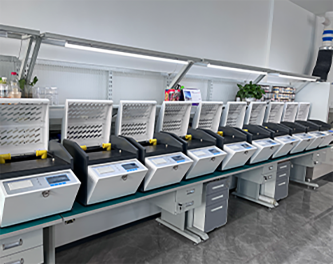TEL:
+86-0312-3189593
 English
English

Telephone:0312-3189593

Email:sales@oil-tester.com
7 月 . 10, 2024 10:44
Back to list
Determination of gas composition using flame ionization detection in chromatography.
Gas chromatography with flame ionization detection (GC-FID) is a commonly used analytical technique in the field of chemistry. It is based on separating mixtures of volatile compounds into individual components for quantification and identification.
The principle of gas chromatography involves the separation of gas molecules based on their affinity for a stationary phase within a column. The sample is first injected into the column, where it is vaporized and carried along by an inert gas, known as the carrier gas. As the sample travels through the column, different compounds interact with the stationary phase to varying degrees, causing them to travel at different rates.
The separated compounds are then detected by a flame ionization detector (FID). In this detector, the effluent from the column is mixed with a hydrogen and air mixture and ignited in a flame. The resulting ions are collected by a collector electrode, generating an electrical signal that is proportional to the concentration of the compound. This signal is then amplified and displayed as a chromatogram, which represents the intensity of each compound at a specific retention time.
GC-FID is a highly sensitive technique, capable of detecting compounds at levels as low as parts per billion. It is also a versatile technique, capable of analyzing a wide range of compounds, including hydrocarbons, pesticides, and pharmaceuticals.
One of the main advantages of GC-FID is its ability to provide both qualitative and quantitative information about a sample

gas chromatography flame ionization detection. By comparing the retention time and peak area of an unknown compound to those of known standards, the compound can be identified and quantified. This is essential in fields such as forensic analysis, environmental monitoring, and pharmaceutical research. In addition, GC-FID is a fast and efficient technique, with analysis times ranging from a few minutes to an hour, depending on the complexity of the sample. The technique is also highly reproducible, with good precision and accuracy, making it a valuable tool for routine analysis in analytical laboratories. Despite its numerous advantages, GC-FID does have some limitations. For example, it is not suitable for non-volatile compounds or compounds that are thermally labile. In addition, the detector can be sensitive to fluctuations in the flame, resulting in baseline drift and noise. However, these limitations can often be overcome by using additional detectors, such as mass spectrometry or electron capture detection. In conclusion, gas chromatography with flame ionization detection is a powerful analytical technique that is widely used in the field of chemistry. Its ability to separate, detect, and quantify a wide range of compounds makes it an indispensable tool for researchers and analysts alike. With ongoing advancements in technology and methodology, GC-FID will continue to play a key role in the analysis of complex mixtures in the years to come.

gas chromatography flame ionization detection. By comparing the retention time and peak area of an unknown compound to those of known standards, the compound can be identified and quantified. This is essential in fields such as forensic analysis, environmental monitoring, and pharmaceutical research. In addition, GC-FID is a fast and efficient technique, with analysis times ranging from a few minutes to an hour, depending on the complexity of the sample. The technique is also highly reproducible, with good precision and accuracy, making it a valuable tool for routine analysis in analytical laboratories. Despite its numerous advantages, GC-FID does have some limitations. For example, it is not suitable for non-volatile compounds or compounds that are thermally labile. In addition, the detector can be sensitive to fluctuations in the flame, resulting in baseline drift and noise. However, these limitations can often be overcome by using additional detectors, such as mass spectrometry or electron capture detection. In conclusion, gas chromatography with flame ionization detection is a powerful analytical technique that is widely used in the field of chemistry. Its ability to separate, detect, and quantify a wide range of compounds makes it an indispensable tool for researchers and analysts alike. With ongoing advancements in technology and methodology, GC-FID will continue to play a key role in the analysis of complex mixtures in the years to come.
Latest news
-
Differences between open cup flash point tester and closed cup flash point testerNewsOct.31,2024
-
The Reliable Load Tap ChangerNewsOct.23,2024
-
The Essential Guide to Hipot TestersNewsOct.23,2024
-
The Digital Insulation TesterNewsOct.23,2024
-
The Best Earth Loop Impedance Tester for SaleNewsOct.23,2024
-
Tan Delta Tester--The Essential Tool for Electrical Insulation TestingNewsOct.23,2024





